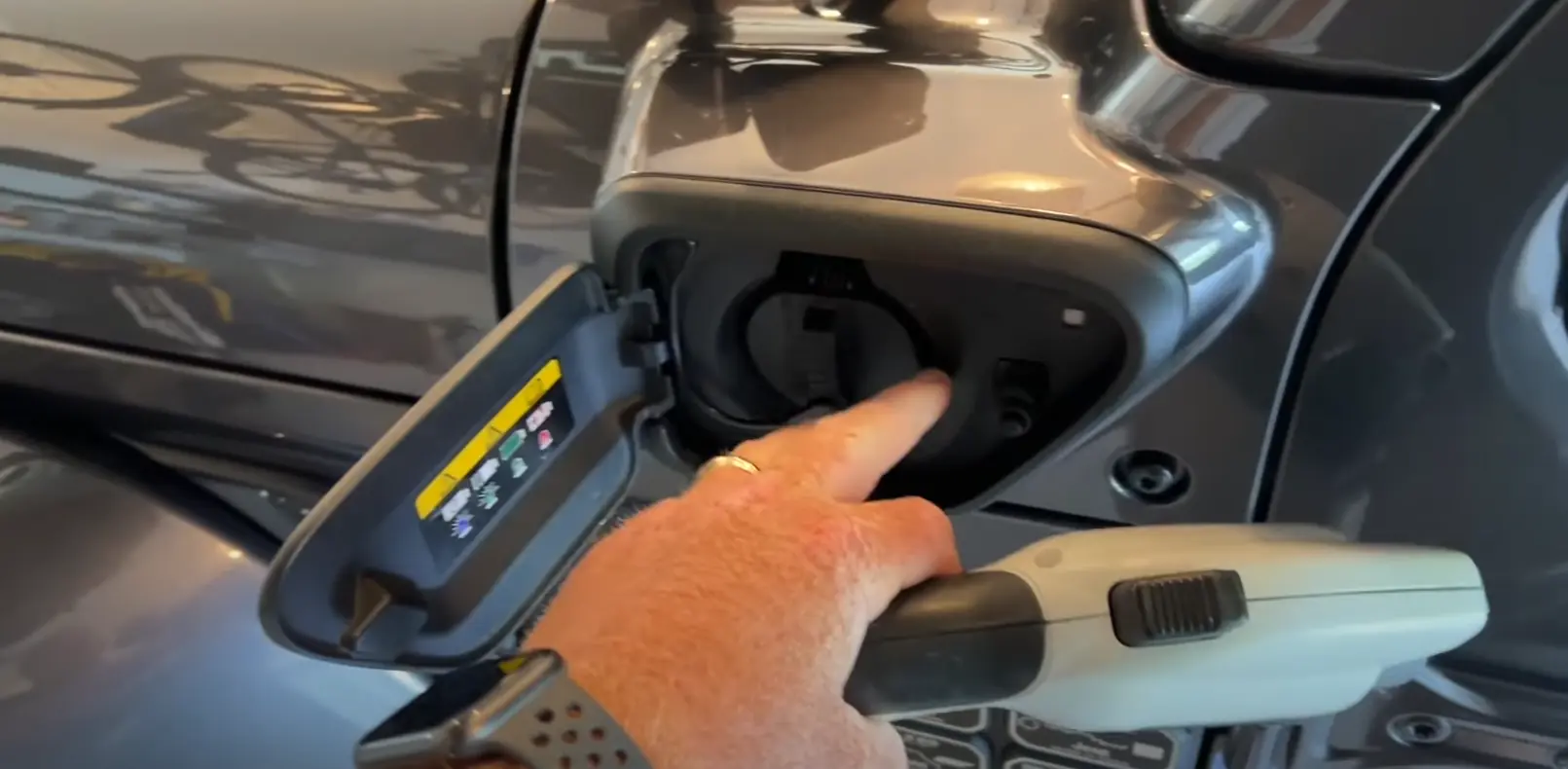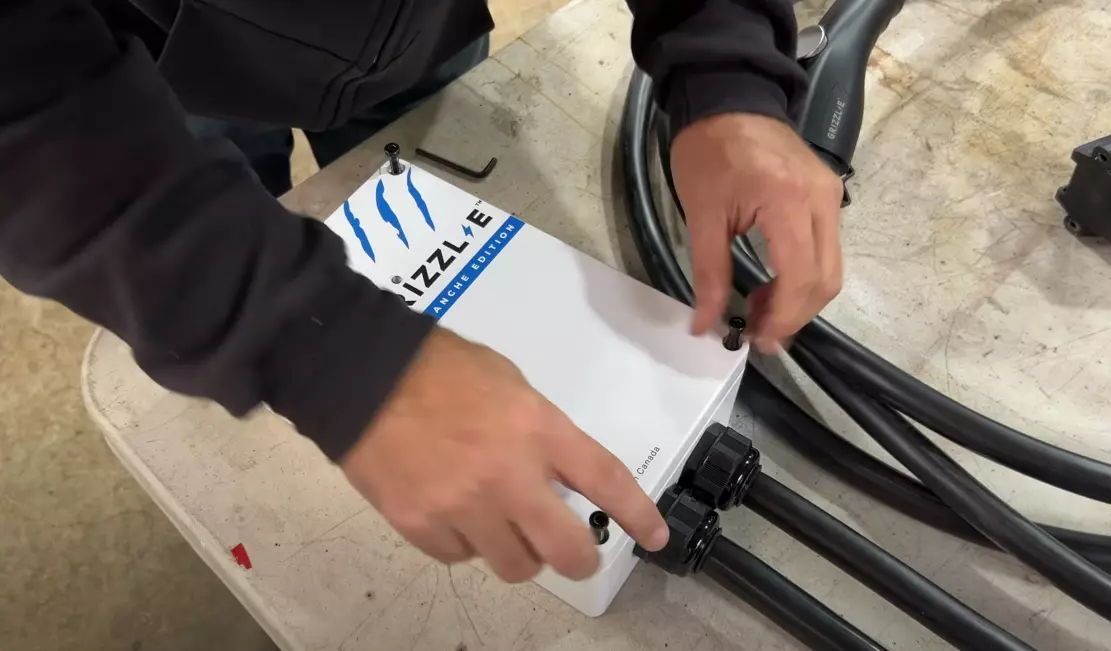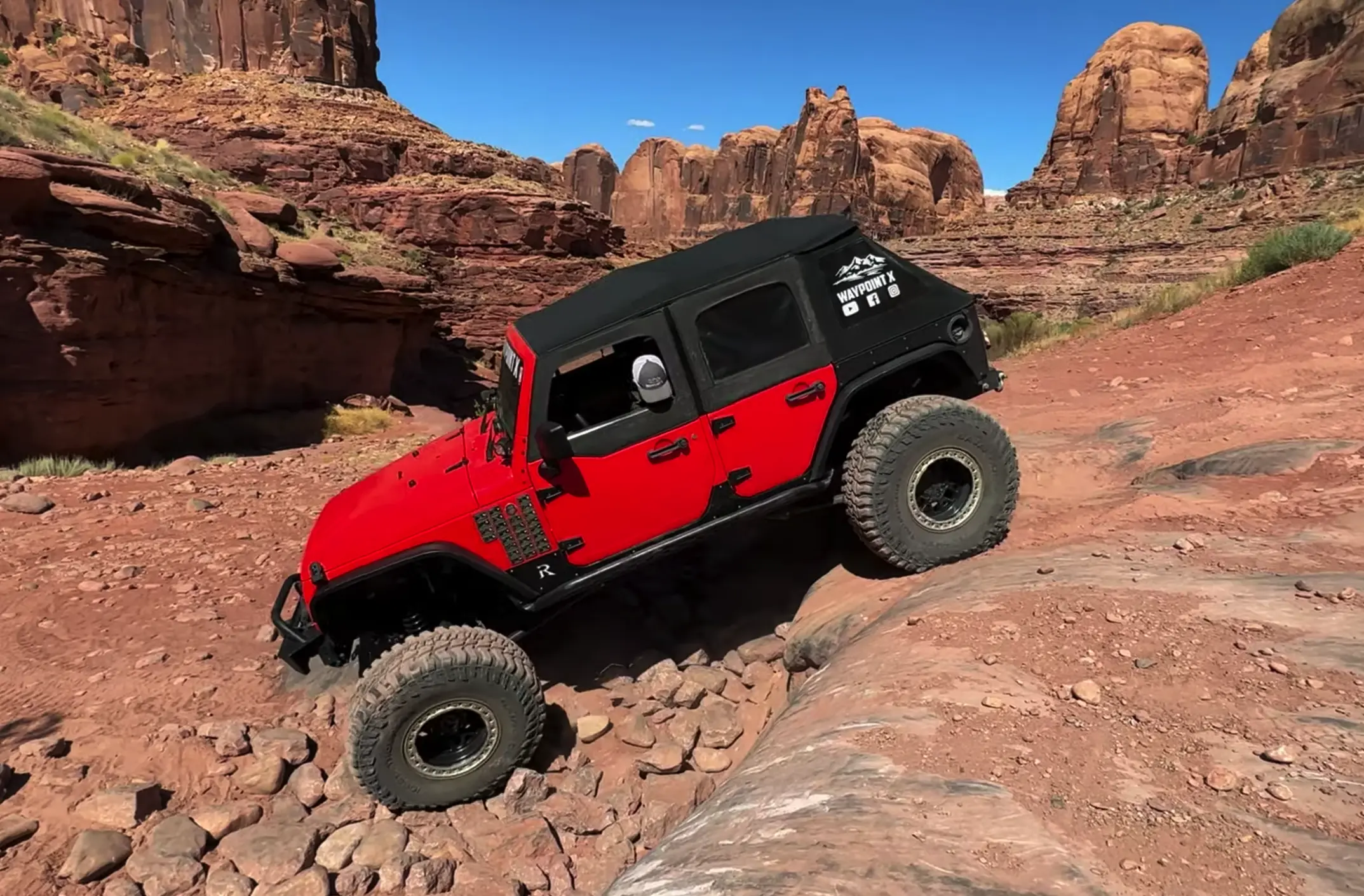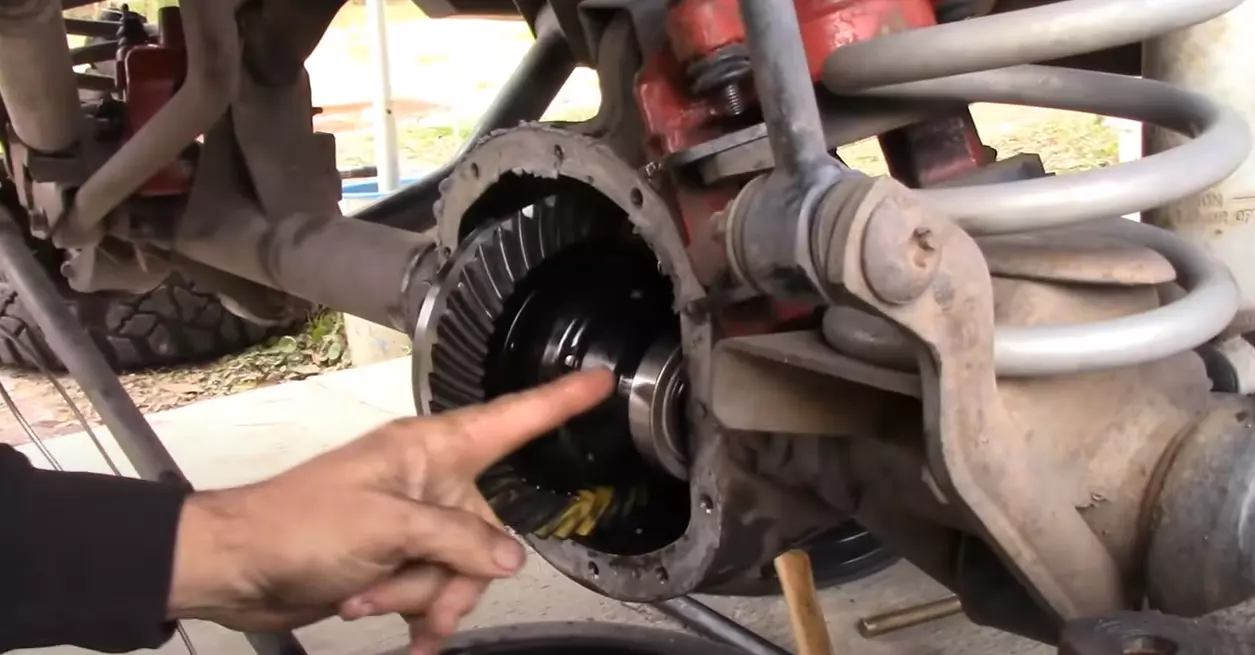
Jeep differentials provide the power and traction you need while offroading, they are the most modified parts of a Jeep. This article will help you understand the various kind of Jeep differentials available for your Jeep.
A Jeep differential is a mechanical system that transmits the engine torque to the wheels, it also splits the torque to the half shafts allowing the wheels to rotate at different speeds. This is necessary because while cornering, the inner wheel travels a shorter distance than the outer wheel.
Jeep differentials permit this by distributing torque evenly to both wheels. It also allows one side of the car to speed up or slow down while the other side remains stationary. The differential is located in the rear axle of most cars.
Stock Jeeps are equipped with an open differential; however, extreme off-roaders and rock crawlers add locking differentials on their Jeep that override the normal function of their Jeep differential by permanently locking the axle shafts together allowing them to rotate at the same speed and force for maximum traction.

You may change the ring gear and pinion of your Jeep differentials, Differential parts from reputable Jeep parts manufacturers like G2 Axle and Gear, Crown Automotive, Dana, and 4WD.com are some of the favorites by Jeep modifiers.
Wondering which axle to install on your Jeep? Read our Dana 44 vs Dana 30: Jeep Axle Guide.
Differential Parts And Function.
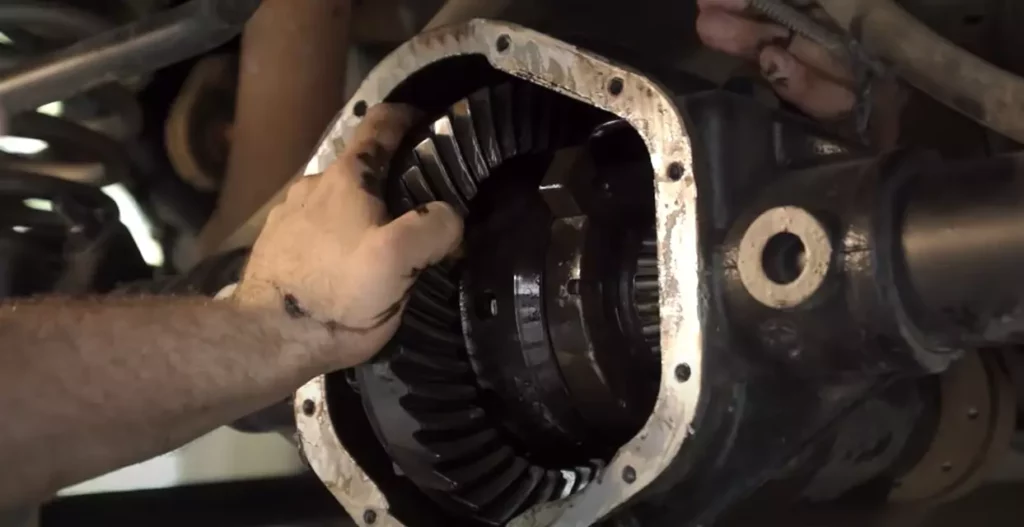
Regearing your Jeep JK, read our post on Regearing Jeep JK
There are six differential parts on a stock differential, each playing its function towards the distribution of torque and splitting the torque between your Jeep’s two wheels, they work together to allow your Jeep wheels to rotate at different speeds when necessary. They include:
Differential Side Gear (Sun Gear)
Differential side gears on your Jeep differential connect your half shafts, and planet gears, the function of the differential side gear is to transmit power from the planet gears to the half shafts.
Drive Shaft
The drive shaft’s function is to transmit power from the engine to the bevel pinion,
Bevel Pinion
The function of the Bevel pinion on your Jeep differentials is to transmit power from the drive shaft to the ring gears.
Ring Gear (Crown Wheel)
The ring gear on your Jeep differential function is to transmit engine power to the planet pinions, sun gears, and half shafts.
Planet Gears (Spider Gears)
Planet pinions are placed on the opposite side of each other, they are normally four on the jeep differentials meshed with the sun gears, their function is to transmit the power to the half shafts.
Axle Shaft (Half Shafts)
The axle shafts of your Jeep function to connect your wheels. The axle shaft (half shafts are connected to the sun gears.
Types of Differentials
There are four types of differentials that can be installed on a Jeep, they include:
- Open differential
- Limited Slip Differential
Open Differential
An open Jeep differential is an automotive engineering system that splits the torque from the drive shaft to the axle shafts, an open differential sends more torque to the wheel with the least grip, giving them more power, Open differentials are useful when cornering, they allow the inner wheels that rotate less than the outside wheels, the outside wheels travel a longer distance and allows it to rotate much faster than the inner wheel.
Open Jeep differentials are engineered to reduce the wearing of your tires when cornering, improve your Jeep Traction, and also prevent your wheels from hopping when cornering.
If you are an on-road driver we recommend open Jeep differentials, even if you are off-roading on the weekends, most stock Jeep differentials will handle a lot of off-road obstacles before you find their limits, this is because in modern Jeeps the open differential is supported by traction control and brake locks are issues are detected.
We also recommend open jeep differentials to Jeepers who have not gone to off-road classes because you have to understand how your rig equipment works before using them, as this can make you get stranded or in the worst-case scenario accidents if you use hubs or lockers that we will explain below.
Limited Slip Differential
Limited-slip Jeep differentials are an upgraded feature for Jeeps, they add the benefits of having open and locked differentials, and limited-slip differentials provide more traction on your Jeep compared to open differentials.
Until the frictional force between the clutch packs is overcome, limited-slip differentials utilize the engagement of a clutch to lock up a differential and shift torque to the wheel with a better grip. Both wheels can spin at different speeds when the differential is not under load.
Aftermarket limited-slip Jeep differentials are available in both rear and front applications. As with any transaxle, limited-slip differentials have their pros and cons, but one obvious downside to any limited-slip differential is the potential for wheel spin while turning at low speeds.
When we wanted to upgrade our off-road Jeep differential from the stock open Jeep differentials, we skipped the limited-slip differentials because of the steps need to unlock the limited-slip differentials, and we have had occasions where they lock when you don’t need them to lock.
Locking Jeep Differentials
Locking Jeep differentials (Lockers) are made to “lock” together with two wheels on the same axle so they travel at the same speed and exert the same amount of force.
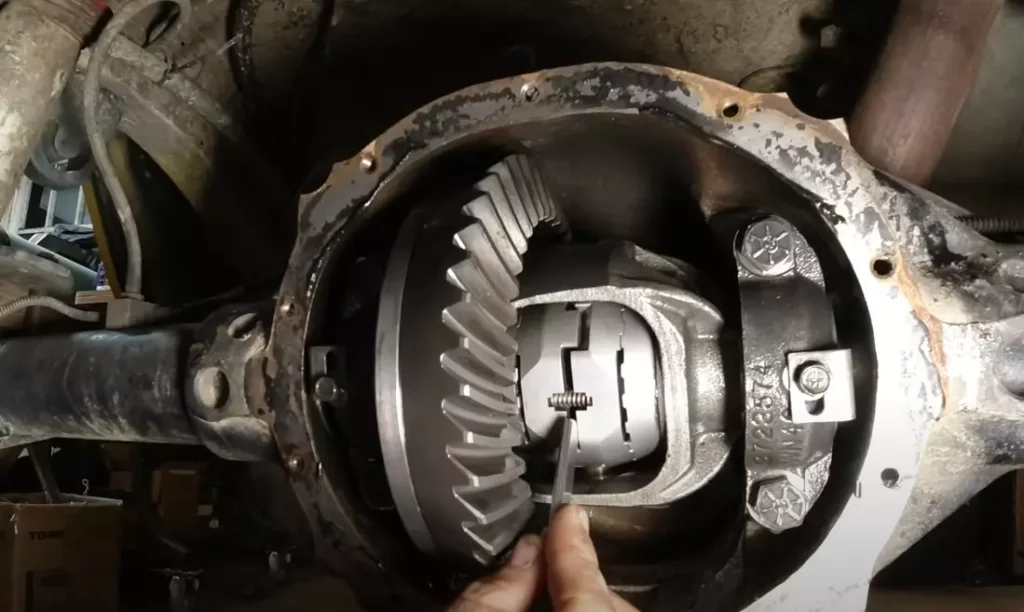
Most stock Jeep comes with open differentials that work well on-road and off-road, however, some Jeepers add lockers to add their Jeep’s off-road capability when you add lockers (Locking differentials) to your Jeep, you lock both wheels to rotate at the same speeds and the same amount of force. Locking differential is essential for rock crawling and extreme off-roading since there is even traction.
There are two types of lockers available for your Jeep, automatic and selectable Lockers. Most Jeepers we have interviewed for this article prefer selectable lockers so that they can have complete control of their front and rear lockers.
For Jeepers who love customizing further their Jeeps, we recommend having your Jeep front differential selectable, this will enable you to have the freedom to select lockers when you need them, and will not fight against your steering when you don’t need them.
Limited-Slip vs Locker
The limited-slip Jeep differentials do wear out and lose their effectiveness, therefore wear is another factor to take into account. Fully mechanical lockers do not have the same type of wear-causing clutch motion.
Lockers are not intended to contain consumable parts like limited-slip differentials, but they can break and will undoubtedly wear out with high mileage or extreme use. The transfer case with the “auto 4wd” function in the middle of the Sahara has the same wear problems. The clutch pack in that transfer case degrades with time. Lockers are tough as nails and will last the entire life of a car when kept up with and used wisely.
Torque Vectoring Differentials.
Compared to limited slips and open differentials, torque-vectoring differentials can do much more. These cutting-edge Jeep differentials are mounted on the drive axle to control thrust between the left and right wheels.
Torque vectoring Jeep differentials are controlled by sophisticated electronics and equipped with intricate gearboxes. Depending on how the torque is distributed when there is an imbalance between the two sides, the ensuing yaw moment (torque about a vertical axis) either promotes turn-in or stabilizes and straightens your Jeep.
Theoretically, torque vectoring enables your Jeep to corner with less understeer and less steering lock. These characteristics ought to result in a Jeep that is easier to manage, has faster lap times, and has higher cornering speeds.
We believe this video will be useful to you, it’s a video showing how to change your Jeep’s differential oil.
Conclusions
I would like to conclude this article with a word of caution, if you don’t know how Jeep differentials work, you would be better off having open differentials because they are safer, you need to know how to control your lockers before buying any equipment that will get you stuck, dig a hole in your pocket by maintenance issues or even worse cause an accident.
This is easy to remedy as there are many off-road classes and clubs where you can learn how to use different types of differentials from off-road instructors.
Sources.
- Here’s how traction control and differentials work to give your car grip
- How A Differential Works
- What is a limited-slip differential? – Auto Express
- What’s the diff? Open vs. limited-slip.

About the Author: James Ndungu
James Ndungu is a seasoned automotive professional with a deep passion for Jeeps. With 40 years of experience in owning, testing, and reviewing various Jeep models, James has gained extensive first-hand knowledge and expertise. He shares his insights, tips, and advice through his engaging writing, helping fellow Jeep enthusiasts navigate the exciting world of Jeeps.



